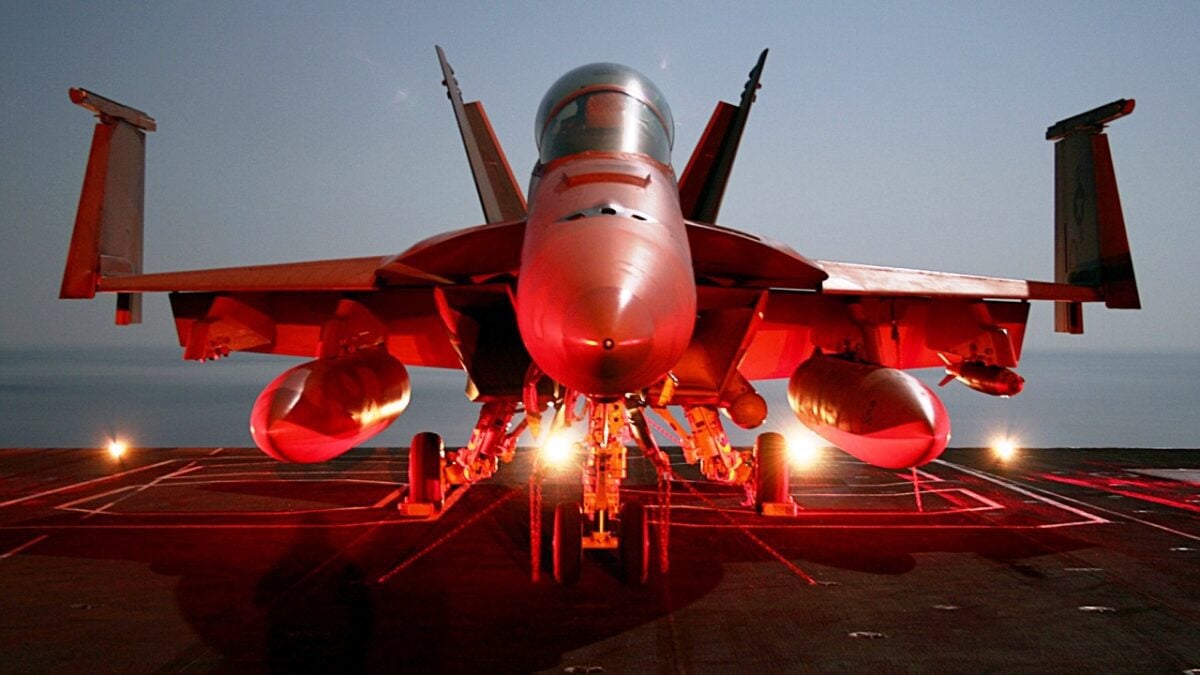Greater quantities of advanced fighters made in America and Europe are expected to be delivered to states across the Middle East in the coming years. Gulf countries specifically have set out to procure the most sophisticated jet technology available.
Earlier this year, the U.S. State Department approved potential sales of fighters and air defense systems to Saudi Arabia, the United Arab Emirates, and Jordan. Kuwait has also started to receive some of the Eurofighter Typhoons it purchased this summer. While the U.S. and European countries have supplied Middle Eastern states with weaponry and airframes before, recent arms deals reflect a regional concern for Iran’s malign behavior.
A Brief History of U.S. Fighter Sales to the Middle East
In the single largest arms sale ever at the time, the U.S. agreed to export approximately $20 billion in advanced weapons and technical support to Saudi Arabia in the 1990s. According to a 1996 New York Times article, F-15 fighter jets and Patriot ground-to-air missiles were included in the deal.
As the Cold War progressed, the Pentagon prioritized developing an airframe that could exceed the capabilities of its Soviet-made counterparts. The F-15 Eagle, a McDonnell Douglas airframe, first entered service with the U.S. Air Force in the early 1970s and quickly earned its reputation as the most formidable fighter in the skies. The powerhouse airframe had the largest engines ever integrated into a fighter, capable of pushing the aircraft to speeds in excess of Mach-3 and to altitudes higher than 80,000 feet. Unsurprisingly, many air forces coveted this airframe.
Riyadh’s procurement of F-15 fighters was soon followed by a U.S. sale of the Air Enhancement Package, which included Airborne Warning and Control Systems. The F-15 undoubtedly enhanced the Royal Saudi Air Force’s aerial abilities and remains an important component of its airframe stockpile. Specifically, the F-15 Eagles have played a critical role in Riyadh’s war efforts in Yemen. The airframes frequently take out Houthi-launched missile and rocket barrages.
Israel received a special variant of the Eagle called the F-15I Ra’am (Thunder) in the 1990s. Modifications to the Eagle enabled the airframe to meet the needs and specifications of the Jewish state. Despite the addition of more advanced airframes over the years, the F-15 has maintained its role as the Israeli Air Force’s “strategic aircraft.”
How Iran Got U.S. Fighters of Its Own
While some advanced fighters were delivered to steadfast U.S. allies, the F-14 Tomcat found its way to Iran prior to the 1979 Islamic Revolution. In order to build a stronger Middle East counter to the growing Soviet threat during the 1970s, then-U.S. President Richard Nixon agreed to deliver 70 operational Tomcats to the Shah. Of course, once monarchical rule was abruptly squashed by the fundamentalist regime that remains in power today, the U.S. regretted this decision. The Tomcat was the equivalent to the F-22 today – the most superior and sophisticated fighter in the sky.
What’s Driving the Recent Surge?
Since the signing of the 2020 Abraham Accords, which better aligned Israel to its Arab neighbors – especially in the Gulf – increased cooperation and defense ties in the region have blossomed. This summer, Israeli Defense Minister Benny Gantz announced that Israel had joined a U.S.-led joint air defense network dubbed the Middle East Air Defense Alliance. A few weeks later, King Abdullah II of Jordan said he would support a Middle East military alliance similar to NATO. These unprecedented remarks and burgeoning ties reflect the growing threat the Iranian regime poses to the region. In order to better thwart the rogue state, the U.S. has prioritized strengthening ties with Washington’s Middle East allies.
Over the summer, the U.S. State Department agreed to export advanced systems to Jordan, Saudi Arabia, and the UAE. The Defense Department said the sale of F-16 airframes to Jordan would help modernize its air force so that it could support the goals of the U.S.-led coalition – goals such as countering violent extremist organizations, countering malign state and non-state actors, and border defense.
In March, Kuwait received its third and fourth Eurofighter Typhoon swing-role fighters, as part of its order of 28 aircraft. Kuwait is simultaneously procuring over two dozen F/A-18 Super Hornets as part of a $2.7 billion deal with the United States. Qatar has also expanded its purchases of Western airframes. According to Forbes, Doha ordered “96 of the most advanced 4.5-generation fighters from three different Western countries. These orders included 36 highly-advanced F-15QA (Qatar Standard) fighters from the United States, 36 Rafales from France, and 24 Eurofighters from the United Kingdom.”

An F/A-18F Super Hornet Strike Fighter Squadron 103 is parked on the flight deck of the aircraft carrier USS Dwight D. Eisenhower (CVN 69) as the ship operates in the Arabian Sea on Dec. 5, 2006. The Eisenhower is in the Arabian Sea in support of maritime security operations.
The sale of advanced fighters to the Middle East is not new. But the U.S. and its Western allies may be more inclined to export greater quantities of its advanced fighters to the region in order to counter Iran’s threatening behavior.
Maya Carlin is a Middle East Defense Editor with 19FortyFive. She is also an analyst with the Center for Security Policy and a former Anna Sobol Levy Fellow at IDC Herzliya in Israel. She has by-lines in many publications, including The National Interest, Jerusalem Post, and Times of Israel.
Note: We have fixed a factual error since publication.

